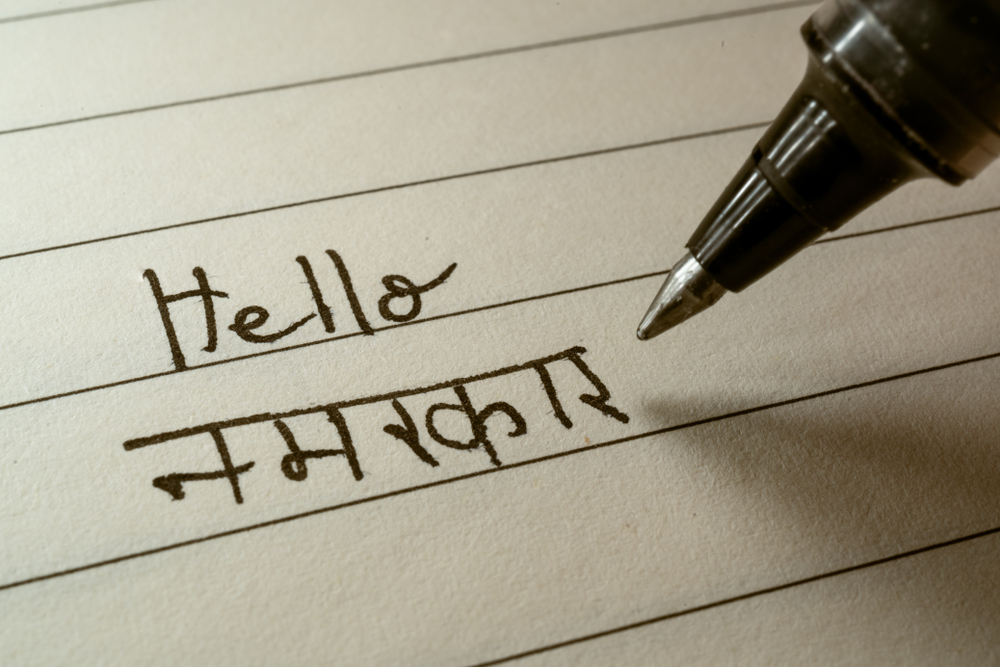Sir — The vice-president of India, M. Venkaiah Naidu, recently underlined the importance of preserving local languages. He is reported to have said that when a language dies, culture, traditions and customs associated with it are also lost. His statement is important, especially since it comes at a time when the dispensation seems keen on pushing the case of Hindi as the official language.
Language truly is the lifeline of culture, tradition and customs of people living in a particular region and the best way to preserve or promote any language is to use it extensively. Naidu exhorted people to start using their native languages at home and in the community. In my opinion, promotion of the mother tongue should begin at the primary school level. But the recent comments of the Union home minister, Amit Shah, have stoked tension. “One nation, one language” would slowly kill India’s regional languages.
While preserving local languages is important, it must also be acknowledged that a lingua franca is needed to ensure smooth flow of information across the country. English would be the best choice, since it can help a person interact on an international platform as well.
T.K. Nandanan,
Kochi
Sir — The vice-president’s statement on the importance of local languages is heartening. It is difficult to believe that comments made by M. Venkaiah Naidu — who hails from southern India where language is a sensitive issue with the power to unite millions — are innocent. Coming as it did on the heels of an attempt to impose one language on the country, Naidu’s speech on the relevance of local dialects and the mother tongue can well be seen as a repudiation of his party’s agenda. Naidu has subtly sent out a message that befits his role as the vice-president.
A.K. Sen,
Calcutta
Home theatre
Sir — The West Bengal department of information and cultural affairs has sent letters to the multiplex authorities requesting them to screen Bengali films during the prime time for the three months of the festive season, starting from October. But why should Bengali films be slotted during prime time only for three months? Bengali films should be given preference, at least in West Bengal. It is unfortunate that the industry which produced the likes of Satyajit Ray, who won worldwide acclaim, is struggling in its home state.
The Union minister, Babul Supriyo, has said that such a step would help only those close to Banerjee. Irrespective of the political affiliations of Bengali filmstars, does Supriyo not want the film industry in his state to thrive? Further, would such a step not help followers of Bengali films as well? Surely Supriyo does not think that all ordinary people are close to Banerjee as well?
Ashes Das,
Calcutta
Sir — The crises that have befallen the Bengali film industry are well-known. Financial woes plague even the biggest of film stars from Bengal. As such, the state’s request to multiplexes to screen Bengali films during prime time is encouraging. This will provide a much-needed boost to the industry which employs thousands of people. One hopes that more people watching Bengali films would also create a demand for fresh content. Unrealistic, melodramatic plots are best reserved for daily soaps. Well-made films are known to attract decent crowds. Thus making them will automatically ensure that multiplexes give such films prime time slots.
Sunita Roy Chowdhury,
Calcutta
Dangerous cacophony
Sir — Playing pre-recorded bird calls to lure these avians out of hiding has been a technique long-used by scientists for research. But the proliferation of cheap recording technology along with the popularity of social media sites like Instagram has assured that droves of people are using this technique to take photos of birds. This can be catastrophic. Already migration and, in turn, reproductive pattern have been disrupted owing to technology. If birds are confused by the twittering of technological devices, their mating rituals will be hampered, leading to a decimation of their numbers.
Roshni Sen,
Calcutta

